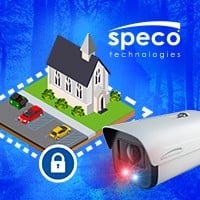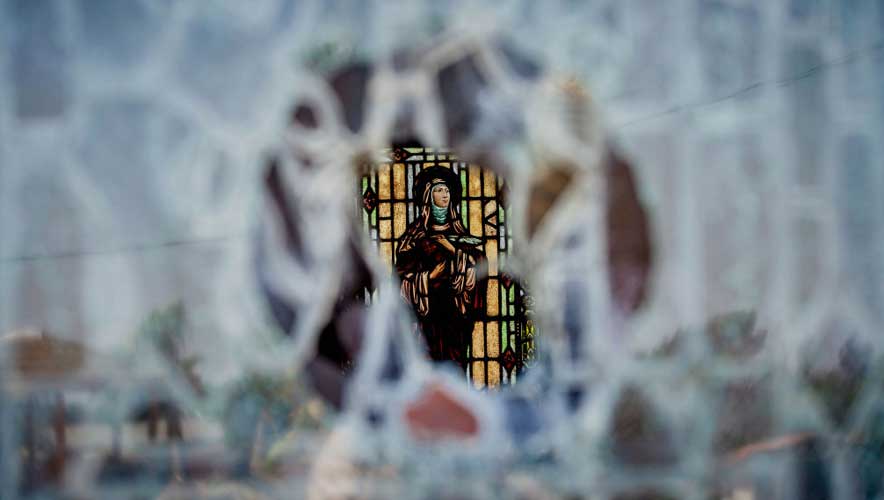4 Steps to Mitigate Crime Risks at Houses of Worship
Every place of worship is different in physical size and design. Some places of worship may be a single building with just a few attendees, open one day a week. Other places of worship may contain numerous buildings and entrances with hundreds of people attending every day. Some are in peaceful areas, while others are in hostile regions.
When considering how to secure a place of worship, it is very similar to the approaches used to secure any property and the concepts of crime prevention through environmental design (CPTED) are applicable. The strategic placing of lights, cameras, fences, gates, landscaping, etc. can create an environment that is less appealing for criminal activity.
SponsoredSpeco Technologies has the solutions to protect YOUR House of WorshipClick the link to enlighten yourself on how you can keep your House of Worship better defended with Speco Technologies |
The Four D’s of Crime Prevention (referenced in Crime Prevention for Houses of Worship, 1st Edition, by Chester Quarles and Paula L. Ratliff) condenses the basics into four categories: deny, deter, delay, and detect.
The Four D’s of Crime Prevention
Deny Entrance
- Keep facilities locked when vacant.
- Limit access to the grounds and parking lot with fences, gates, and landscape. Use crime prevention through environmental design (CPTED) principles, observation, and surveillance cameras.
- Lock doors to the buildings and limit entry using intercom systems and cameras for access.
- Use greeters and individuals trained in observation and behavioral detection skills who will notice things such as bulky clothing, backpacks, tote bags, etc.
- High-visibility patrols and teams can create a security presence.
Deter the Attack
- Communication is extremely important. Converse with strangers by acknowledging them. Comment on their clothing. Ask questions. “Do you know anyone here? Are you meeting someone?” Trust your gut if something does not feel right.
- If someone has entered the facility in clothing that could conceal a weapon or if carrying a backpack, tote, etc. keep them in view. Have a security person remain close and keep eyes open—including during worship, such as prayer—to watch for danger.
- Have security officers and/or trained members prepared to act should an active shooter situation evolve. Use methods such as Run. Hide. Fight. Distract or engage the assailant.
- If a service is live streamed, have operators trained to shut down the broadcast in the event of a disruption.
Delay Entry/Exit
- Walk-through security scanners should be at every entrance.
- Security hardware can delay the entering and exiting and controlled remotely.
- If someone gains entry and you observe something of concern, signal for others to begin conversations. It’s okay to ask them to talk with you in a more secure area.
Detect Intrusion
- Motion detection systems and alarm systems will alert police when someone has entered.
- Cameras can allow viewing from multiple locations and remotely.
- Inspect perimeter doors/windows upon arrival.
- Know your congregation and notice when someone is new.
- Attempt to reach out to visitors and keep them under observation.
ASIS published A Security Survey for Houses of Worship: A Supplemental Design Instrument for Crime Prevention for Houses of Worship in 2015. It will guide you through each step of the process as you work to mitigate threats from the outside and respond to any threat that may have breached the outer layers of security.
Paula L. Ratliff, BSC, MS, is a criminologist and freelance writer from Kentucky, USA. She is the author of Crime Prevention for Houses of Worship, A Security Survey for Houses of Worship, and various other publications. She is a member of the ASIS Cultural Properties Community and the Houses of Worship subcommittee.












